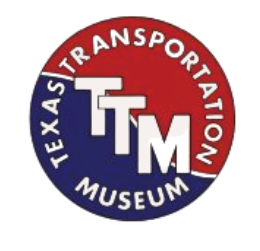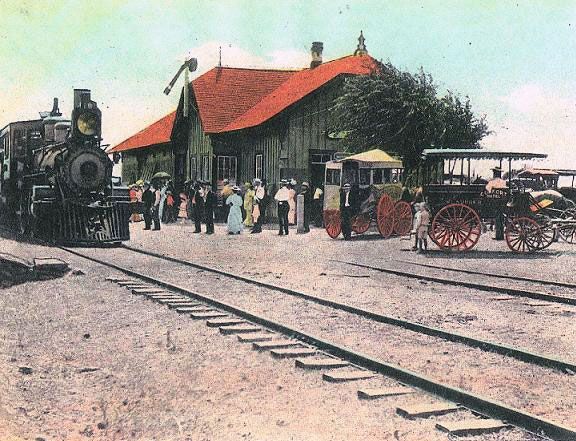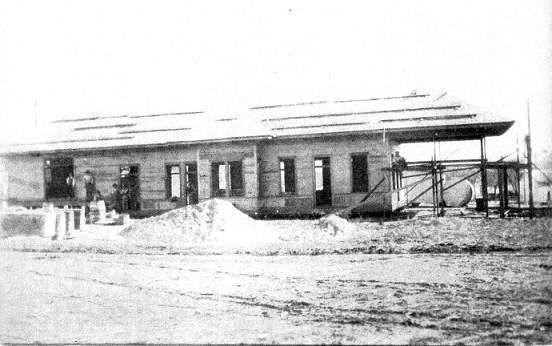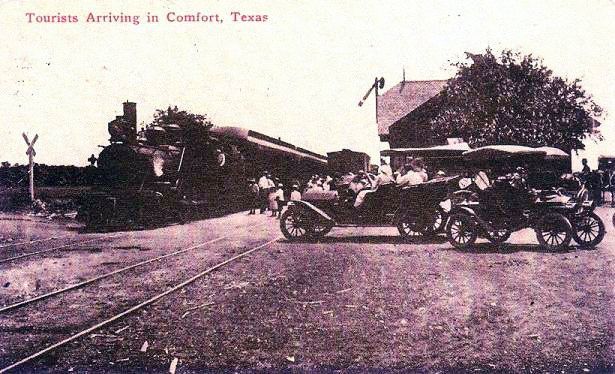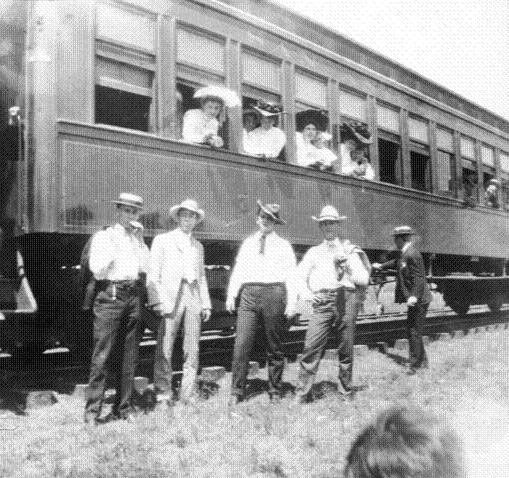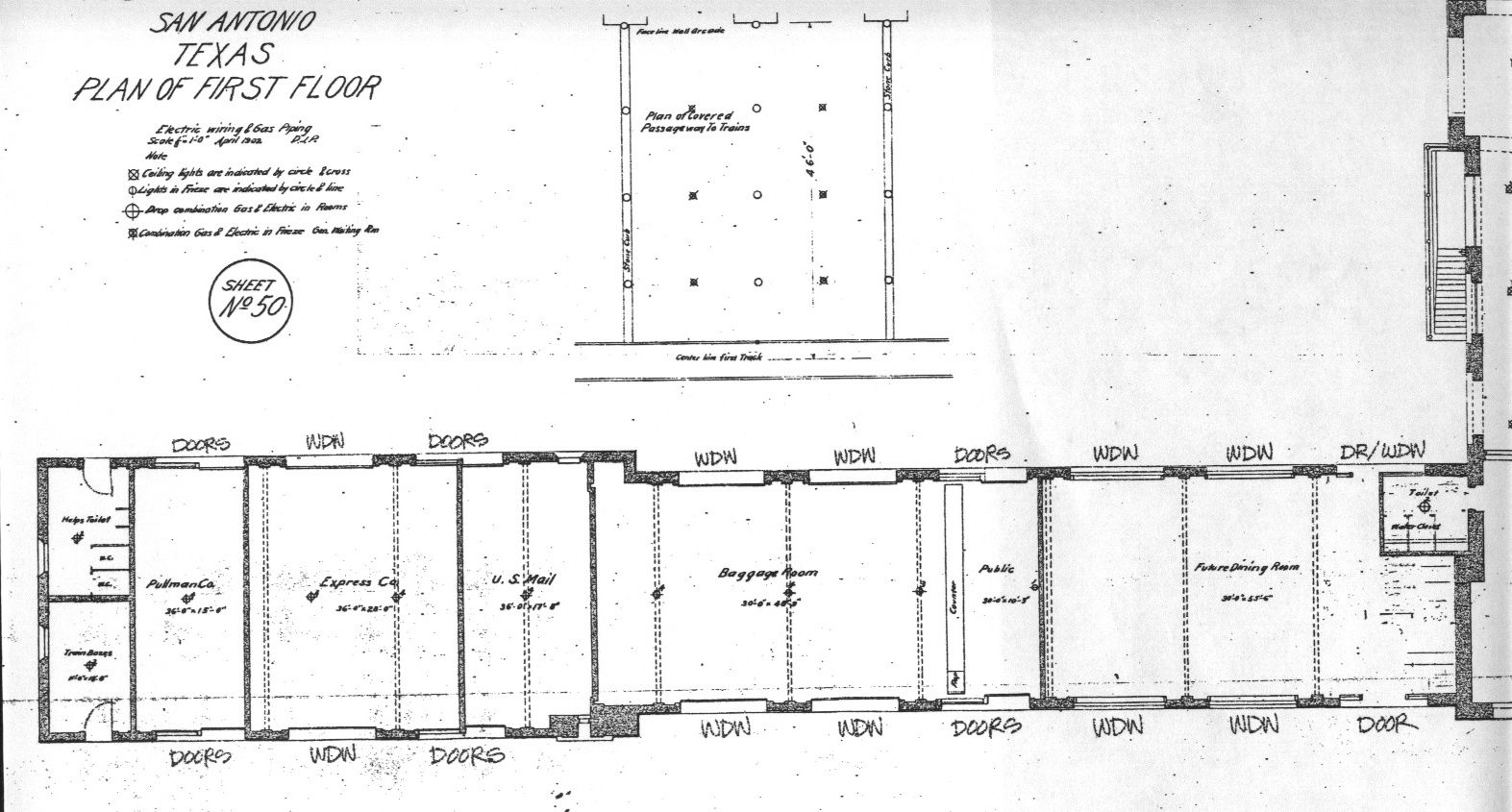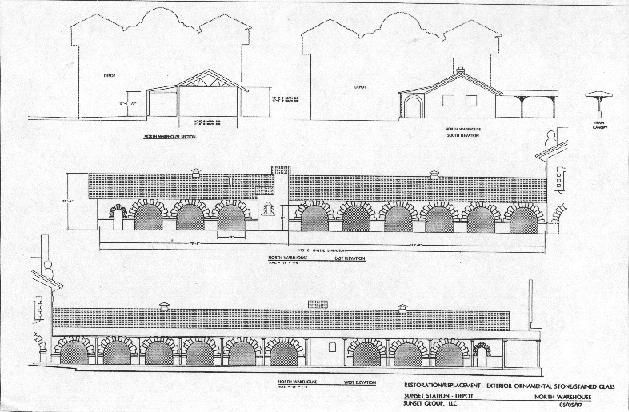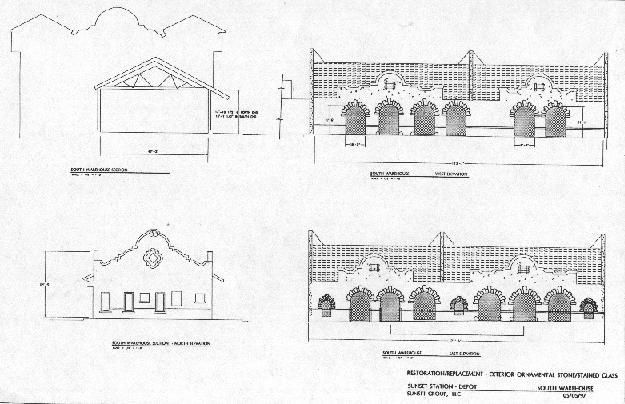The Railroad in Comfort, Texas
We are grateful to the Comfort Heritage Foundation for their generous assistance with the research for this project. In particular, Margaret Morries went out of her way to provide every possible assistance. The history of Comfort and its residents is in very capable hands. Their building is a converted bank on High Street. You can contact them at PO BOX 433, Comfort, TX 78013, or (830) 995-2641.
We deeply appreciate the generosity of Betty Johnson, whom we met at the Heritage Foundation doing the volunteer work that makes the foundation so impressive. Betty allowed us to use some of the photographs in her late husband's extensive private collection. Freeman Johnson was a dedicated rail hobbyist, and his pictures on this page, taken in 1967, tell the story of the railroad and where it used to run better than any map or words might do.
Comfort, Texas, is nestled along the banks of the Guadalupe River, about 45 miles north-west of San Antonio. It was settled in 1854, on a site originally occupied by native Americans, by the same type of German free thinkers who were spreading out all over the hill country from their origins in New Braunfels. As in Boerne, these people were highly principled. They resisted any type of hierarchical social structure, which included a town council and churches. The name of the town is somewhat typical of their humor, as there was little in the way of comfort in what were then frontier conditions.
The San Antonio & Aransas Pass railroad reached Comfort in 1887, having come through Boerne and Waring not long before. The idea was to head up through the hill country towards, eventually, San Angelo. However, for a number of reasons, both financial and geographic, the line never did pass beyond Kerrville. Before it could reach Comfort, the line had to cross the Guadalupe river. A rather fine bridge was constructed, which still stands today. The railroad leased the front parlor in the home of a local bachelor, Carl Vetterlein, on 4th Street, only fifteen feet away from the new tracks. This dwelling no longer exists, though, of course, neither do the tracks.
Until the new depot was completed in 1892, A.G.C. Matter, the railroad agent, used the house. The new structure and adjacent cotton loading platform were a considerable improvement. The depot was large, very typical of the type built by the San Antonio and Aransas Pass. The area devoted to freight was larger than the passenger area, but the latter must have been quite accommodating. As the town lacked any congregational facilities, the depot was briefly used for this purpose by one of the growing number of congregations being formed by newer town residents who had different beliefs from the original free thinkers forty years earlier.
Such gatherings, one presumes, on a Sunday must have been difficult, as Sunday had become the day for San Antonio residents to visit hill country towns in a form of local tourism that was both popular and rewarding. A return ticket from San Antonio costs $1.50. Local hotels began to send horse carriages to meet the trains in order to encourage visitors to patronize their establishments. The desire to get away to the cleaner air of the hill country, which still exists today, was fostered by the railroad, not only as a way to boost passenger revenues. Many people decided to move to these towns as San Antonio became a bigger and bigger metropolis, with its attendant issues of congestion, pollution, and crime. New residents and farmers along its route would provide the railroads with even more business opportunities.
Agriculture was the mainstay of Comfort's economy. Cotton, pecans, grains, and tobacco flourished in the area. Comfort even had its own cigar factory. Hogs, sheep, and goats did well, too. The area became known internationally for its production of Mohair. The warehouse catering to mohair lasted into the 1970s, as you can see in one of the pictures. They also produce rock, lumber, and shingles. The railroad was kept very busy in the early years of the 20th century, running as many as three freight trains a day, not to mention one daily scheduled passenger train and a worthwhile number of special chartered trains, usually on weekends. In time, Mr. Matter was succeeded as agent by Mr. Mearms, who had been the station porter.
It was not all plain sailing, however. There were a number of train accidents and derailments. The first was recorded as early as 1888. By 1908, the station master was Mr. McNutt, and he discovered, on Sunday, April 3 of that year, that the depot had been broken into and the safe blown up with nitroglycerin. Along with some of his own personal papers and checks, $40 in cash and another $60 in checks were missing. On the morning of Friday, Nov. 8, 1913, the tracks under a train heading west collapsed due to subsidence just outside the town. Everything but the locomotive left the tracks, but only the tender toppled over. The freight cars and coaches remained upright. Two local politicians were on board, Congressman Slayden and State Senator Real, but neither they nor any passengers on what was described by "The Comfort News" as being an unusually full train were hurt. To make matters worse, the derrick on the wrecking train, which restored the line and got the passenger train back on the line as early as the next day, tore down electrical wires as it was coming back into Comfort in the evening. The damage caused shorts which affected the sub station and power was not restored to the town until Sunday evening.
On Friday, June 26, 1914, there was a head-on collision between a scheduled freight train coming from Center Point and a work train that was heading there to get out of its way. The accident happened near a curve, even though the work train was able to stop and begin moving in reverse. As a result, the resulting impact was not too bad and the crews got away with only cuts and bruises. There was no derailment, and the freight was able to continue its progress within a few hours. The accident on December 2, 1927 seems from the pictures to have been another case of the rails subsiding under a train but there are no written accounts of the incident.
TTM's 1924 Ford Model T Truck In and Around Asherton in 2010
Until 1913, Comfort was the depot for nearby Fredericksburg. The citizens of that town, on a considerably higher elevation about 24 miles to the north-east, never gave up on getting railroad service, even after the San Antonio and Aransas Pass decided to head for Kerrville in 1887. They raised enough money to get a railroad of their own built. In 1914, The San Antonio, Fredericksburg, and Northern joined the main S.A. and A.P. line just before it came into Comfort. The new line failed financially due to its enormous debts. In 1917, it was reorganized as the Fredericksburg & Northern. F. & N. service lasted until 1942, at which point Comfort once again became the nearest point for railroad service to Fredericksburg.
In 1916, the depot was destroyed in a fire, just three years after the same thing happened in Kerrville. While Kerrville acquired a brick structure, Comfort's was rebuilt in wood. It was also considerably smaller than the original depot, reflecting the already changed nature of passenger transportation. Reliable cars and trucks, better roads, and bus service that was both faster and more frequent than the train had steadily eroded the number of people using the train to get around. There was only ever one passenger train a day through town. According to the 1941 train schedule, it took over an hour to get from Boerne to Comfort, and as the pace of life picked up, people wanted to get to places faster and more often than the train could get them there.
In 1925, the San Antonio & Aransas Pass was fully taken over by the Southern Pacific and became part of the S.P.'s 'Texas & New Orleans division. The company had been under de facto SP control for many years already, so there were not many repercussions from this development except that money for operations, maintenance, and new rolling stock was more plentiful. It is true that the northern line to Kerrville was never a moneymaker for the railroad and could even be described as a loss-maker from day one. The years of the Second World War were the lines last hurrah. It just so happens that this was also the time that Comfort's preeminence in mohair production occurred. San Antonio grew at an unbelievable rate at this time, and with two military camps on the line, Camp Bullis and Camp Stanley, the number of trains was higher than at any time before or since.
In 1959, Comfort also became the depot for nearby Center Point when its depot was closed. This was the last year for passenger service on the line. The original depot in Boerne was replaced by a smaller one at the same time. As Comfort's depot had already been reduced in 1916, it kept its familiar building. An article in the local paper has a journalist asking the railroad what the best course of action for the people of Comfort would be. "Use the Railway Express Agency for your deliveries," was the reply. As FedEx and UPS began to grow, even that trade became second-best to railroads.
As time went by, the railroad only offered service if you needed three fully loaded cars. The days of partial loads in box cars were gone. The railroad's profitability lay in shifting mass tonnage, not in small loads, and certainly not in people. As there was little in the way of industry beyond the quarry on the outskirts of San Antonio, the railroad announced its decision to abandon the line beyond that point on February 4, 1971. Pretty soon after railroad work, trains came up into the hill country one last time, this time to remove the tracks. Comfort claimed the now abandoned right of way within the eastern part of town and converted it into a better road, HWY 473, under IH 10, towards Sisterdale. The line west of the depot, towards Sisterdale, over Cypress Creek, is even harder to find. Essentially, it is gone without a trace.
The old railroad depot, however, is still in its original location on Highway 27, at the top of High Street. The freight doors at the east end and on the side facing the road have been removed and replaced with a window and an entrance door, respectively. An old railroad section house remains nearby as well. A failed attempt was made in the early 1990s to convert the depot into a museum and heritage center. It could be that its small size did not make it practical. Instead, an old bank on High Street, just a few blocks away, was chosen. This now contains a wonderful repository of the town's rich and varied history. With no tracks and continued development all around, it would be easy to think the depot had been relocated. A public road has taken over the old right of way to its south, and the land to its north has been so significantly changed that it is almost impossible to see where the tracks went. For a while, the depot was occupied by a store called "Cowgirl Corral Collectibles," but this closed in 2006. A porch has now been added to its frontage while it awaits, as of mid-2006, a new occupant.
The old railroad bridge over the Guadalupe River near Comfort is still hanging on as well. Some of its supports don't look so hot, and it has no deck, but the old wooden trestles are in pretty good shape at each end. A new road bridge was under construction right underneath the old bridge when these snaps were taken in 2011, on the back road between Comfort and Waring.
Transportation Museum
CONTACT US TODAY
Phone:
210-490-3554 (Only on Weekends)
Email:
info@txtm.org
Physical Address
11731 Wetmore Rd.
San Antonio TX 78247
Please Contact Us for Our Mailing Address
All Rights Reserved | Texas Transportation Museum
